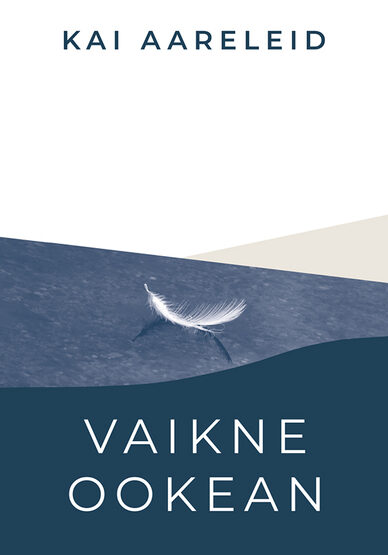Kai Aareleid, Holger Kaints, and Ilmar Taska deal with the 1940s in their newest novels.
Discussing the relationship between memories and history somewhat resembles the debate over which came first: the chicken or the egg? Although there is no point in trying to reach a final conclusion and neither is it worth taking the debate too seriously, it is nevertheless clear that history and memories depend on each other. You could probably say that on the one hand, history is reflected in memories; and on the other, memories help to construct history. Memories without history is simply storytelling, but history without memories is dry, factual crumbs.
Thus, neither is it strange that historians of all eras have striven to embellish their works with true-to-life details, while writers conversely tend to rely on the work of historians in order to weave between definite facts that, which makes history the story of us all – life itself.
It is astonishing that over the spring of 2016, three novels were published in Estonia that all speak of the grimmest times in 20th-century Estonian history: the annexation of the Estonian state, World War II, and the Stalinist era. Beginning with the earliest period is Holger Kaints (1957), the plot of whose Uniuv maa (Drowsy Land) begins with Estonia’s “Era of Silence” in 1938. The starting point for the central narrative of Kai Aareleid’s (1972) Linnade põletamine (We All Fall Down) is the pivotal 1941, although flashbacks into the era of Estonia’s first independence can also be found. The story in Ilmar Taska’s (1953) Pobeda 1946 (A Car Called Victory) commences in the year included in the Estonian-language title – incidentally also the year, with which Kaints’ work ends. Aareleid’s chronological reach is broader, on the other hand – the novel begins and ends in 2013, but the main plot extends from the early 1940s to the early 1960s.
Thus, the three authors all handle the same years – each doing so in a slightly different framework and focusing on different perspectives in their equally tragic stories.
*
The title of Holger Kaints’ novel is programmatic. In one respect, “Drowsy Land” alludes to the perception of one of the book’s central characters – a young communist recently released from prison, who sees Estonia as a drowsing, lethargic frog-pond ignorant of its own fate. In another respect, Kaints has a more serious historical-political dimension in store: he establishes a direct connection between the autocratic rule of Estonian President Konstantin Päts – termed the Era of Silence – and the two occupations that followed. Kaints’ message shows no mercy: the former caused the latter, and society’s submissive and compliant transition from independence to occupation became possible in thanks to political “drowsiness”.
Kaints’ perspective is relatively unexpected: the protagonist is a young woman passive to the events that are transpiring. She marries a staunch communist, giving the author an opportunity to address the fateful last years of Estonian independence from the standpoint of communists enraged by sovereignty.
At the center of Ilmar Taska’s Pobeda 1946, conversely, is a relatively naïve but sharp-minded boy, who does register everything happening around him with detailed precision, but is unable to competently determine between good and bad. As a result, the work’s main characters – an NKVD[1] agent; the boy’s mother, who has nationalist sympathies; and his mother’s former prima donna half-sister, who despises the regime – as well as secondary characters, including orphanage wards and workers, feature more as embodiments of different principles than they do as outlined, psychological individuals.
The protagonist in Kai Aareleid’s Linnade põletamine is likewise a child – a girl named Tiina, who grows to become a young woman over the course of the novel. Since the unfolding and development of her personality is framed by a time predisposed to silence, Tiina’s primary traits are her attentiveness, ability to notice minor details, good memory, and skill for perceiving the causes behind events; even if she lacks the knowledge and experience needed to rationally interpret them.
Although the three works share great contextual similarities, Taska and Aareleid’s novels intersect more with each other, while Kaints’ stands at a slight distance in many senses. Particularly striking with both Pobeda 1946 and Linnade põletamine is the child’s perspective, which connects not only these two books, but also brings to mind a legendary work of Estonian literature: Viivi Luik’s (1946) Seitsmes rahukevad (The Seventh Spring of Peace, 1985). Its pages likewise contain a view of the world through the eyes of a child, and as one may suspect from the title, its plot runs until the early 1950s.
One question forcefully springs up: why is it necessary for Estonian writers to return to that period now, during the latter half of the second decade of the 21st century? And why from a child’s perspective? Did Luik leave anything out? Had the Soviet era pressed its stamp on Seitsmes rahukevad, forbidding the author to speak candidly about everything?
Perhaps, surprisingly, an answer to these questions can be found in the one novel of the three that features not a child, but an adult woman at the center of the plot – Holger Kaints’ Uinuv maa.
*
When speaking about writing Pobeda 1946, Ilmar Taska (whose background is in filmmaking) has kept it no secret that he greatly proceeded from the rules of cinema, which demand a coherent plot and characters, with whom anyone can identify (thus, one of the novel’s main characters is a British BBC journalist – this so that Western readers can find something and someone familiar in the story, set behind the Iron Curtain). Similarly, much of Taska’s and his family’s own personal history can be found in the book – the author was born to deportee-parents in 1953 in Kirov, Siberia.
Kai Aareleid has likewise said that much of Linnade põletamine is her own family history, and although the work contains mainly micro-historical material and post-war Tartu folklore, the focus is not on history in the wider sense, but on that of one family – seen firstly through the eyes of a child, then a teenage girl, and ultimately a young woman.
Yes, in the epilogue of Holger Kaints’ Uinuv maa, the author mentions stories heard in his childhood, and as such, the book is also connected to a particular family history. But at the same time, the author thanks historians and references works, from which Jaak Valge’s extensive study Punased I (The Reds I, which addresses the Estonian Marxist movement and its leading figures) stands out especially. Reading this and other historical volumes gave Kaints an opportunity to delve into the projects and activities of Estonia’s former communist elite, as well as to describe with psychological conviction and necessary empathy the characters, who scored their first points in 1940, and as of the autumn of 1944 applied themselves with merciless determination to building communism in Estonia. “Bourgeoisie manure will be the fertilizer of our bright future,” one says in satisfaction, with which Kaints certainly captures his characters’ mentality.
Although Kai Aareleid – whose misery-rich post-war Tartu manifests with extreme realism – is not short on abstractions, a convincing milieu, or compelling, true-to-the-era characters (nor is Ilmar Taska, who manages to convey the paranoid atmosphere of 1946 with terrifying conceivability), diverging goals are nevertheless apparent between the two and Kaints. Specifically, Aareleid and Taska focus more on the story: for the former, the content of what is spoken is of equivalent importance to the way in which it is spoken; for the latter, impactful scenes, memorable backdrops, and a rapidly branching storyline are what is important. On the contrary, it probably would be an exaggeration to say that Kaints is intrigued by the historical-political dimension: his book can truly be read as a polemical commentary on the works of Estonian historians, and on a particular debate that has been going on in Estonian society since the late 1980s – fading from time to time, only to surface again with greater intensity. It is a debate that can be condensed into a single agonizing question: was the silent surrender of 1939 right and inevitable, or could an alternative have been found?
*
This same agonizing question also offers an indirect answer to why any Estonian author would now, in the early 21st century, turn back to those Stalins, Hitlers, deportations, and genocides in the first place. On the one hand, it is obvious that we will never know whether Taska, Aareleid, and Kaints would have been able to write these books in 1985. At the same time, it is also clear that every generation not only wishes to tell its own story in its own particular way, but in a broader sense, every era needs that. And this not only in regard to the problems that directly impact the given era, but more broadly.
Perhaps now, when those who were children during World War II and the Stalinist terrors are becoming ever more important as we think back on the events, it is the right point at which to allow children’s voices to speak. And the authors, for whom this isn’t enough; who wish to do something else (such as revive the psyches of communist collaborators, like in Kaints’ case) must indeed seek out other sources, whether they are written or passed down orally in a family. And this is precisely where the complicated game between history and memories comes into play – a game, in which it is impossible and, in truth, pointless to choose sides. Memory, with its passionate proximity, does trump the chilliness of scholarly historical treatment, but we are nevertheless only able to conjecture the greatest abstractions thanks to the factual work of historians.
Considering the very unique position of a child as witness to an era (children may remember things in outright uncomfortable detail and register minute details of the adult world, the comprehension of which will come only decades later, in adulthood), Chairman of the Estonian Writers’ Union Tiit Aleksejev raised a justified question during a radio program: if the depiction of war– and post-war life through the eyes of a child has now been dissected in the settings of Tallinn (Taska), Tartu (Aareleid), and the countryside (Luik), then can we expect the 1960s, for instance, to be handled next? Perhaps, indeed. By now, Estonian classic Mati Unt’s 1963 novel Hüvasti, kollane kass (Goodbye, Yellow Cat) has accompanied several generations of young Estonians through their teenage years, but it would be exciting if someone tackled that decade in all its upheaval, contradiction, and – of course – romanticism anew. There’s enough material to go around. And just as Kai Aareleid and Ilmar Taska have proven as memory-writers and Holger Kaints as an history-writer, Estonia certainly boasts authors capable of crossing the divide between decades, each reviving with their own unique styles and methods a time, which hasn’t actually disappeared, but is often only forgotten – in both its pain and its beauty.
[1] The People’s Commissariat for Internal Affairs (NKVD) was the name of the Soviet state-security agency in 1941 and from 1943–1946.
Peeter Helme (1978) is an Estonian writer, journalist, and anchors the Estonian Public Broadcasting’s literary radio programs. Helme has published five novels. The latest of these, Sügaval läänes (Deep in the West, 2015), is a drama set in the industrial Ruhr Valley.





